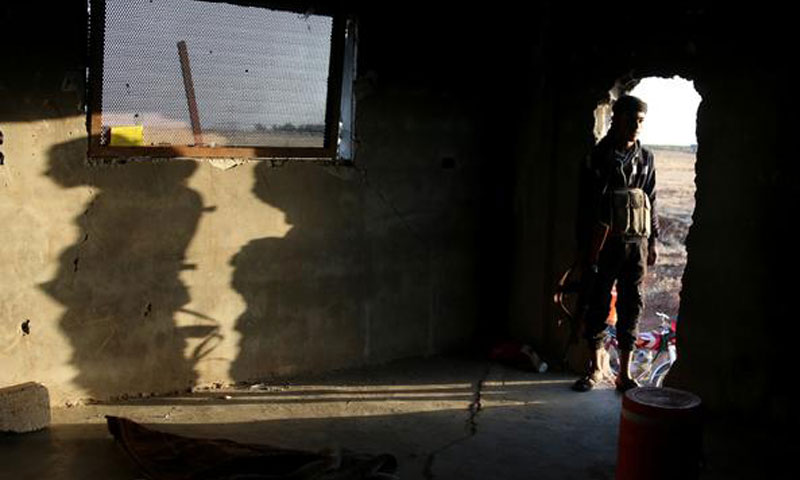The buffer zone in southern Syria agreed upon between Russia and the United States is creating division among opposition ranks, Enab Baladi reports
For the second time since the start of the military campaign by President Bashar al-Assad’s forces on the city of Daraa a sudden truce has been declared as a means to open the doors for a “national reconciliation” based on the Syrian regime’s vision. This was met by a denial from the Syrian opposition that it had knowledge of the agreement, as international and regional maps are drawn up far away from the two parties fighting on the ground.
On Friday, July 7, the United States and Russia agreed to a cease-fire in Syria beginning from July 9, according to Russian Foreign Minister Sergey Lavrov, who said that “Russian, American and Jordanian experts have agreed on a memorandum of understanding to establish a de-escalation region in Daraa, Quneitra and Suweida.”
“Russian military police will oversee the cease-fire in coordination with the Jordanians and Americans,” he added.
The truce coincided with the Southern Front, which is part of the Free Syrian Army, boycotting the Astana negotiations, opening a wide door to a flow of rumors, most prominently talk of a regional agreement to draft new military maps in Daraa and the surrounding southern areas.
In the first day of the fifth round of the Astana negotiations, the Southern Front groups boycotted the talks, saying in a statement that they “had completely boycotted the Astana conference and had no representative.”
International news agencies reported a rough consensus between the parties participating in Astana 5 on the drawing of the borders of the “de-escalation zones.”
However, the Front said that “no one was authorized to speak, negotiate or represent it at the talks.”
The reason for the boycott goes back to “the inability of successive international conferences to take any serious steps to stop the Syrian bloodshed,” according to the statement.
Maj. Issam al-Rayess, the Southern Front spokesman, told Enab Baladi that the statement was issued “out of fear that people could claim to be representatives as well as to clarify the reasons for the boycott.”
However, representatives from the opposition delegations participating in the Astana talks said that the withdrawal of the Southern Front was due to its approval of the American-Russian-Jordanian deal to establish a buffer zone in Syria’s south, something confirmed by the truce agreement, which was signed just two days after the conclusion of the talks.
The delegation of the groups participating in the talks called on the Southern Front to “withdraw the maps agreed upon with Russia, America and Jordan and unify ranks with the north.”
In a statement obtained by Enab Baladi, the delegation expressed its concern about the secret meetings held by the Southern Front with Washington and Moscow in Jordan, leading to “the separation of the south from the north for the first time, while also dividing Syria, the delegation, and the opposition.” It called for “the delivery of the maps to ensure agreement upon them and the unification of efforts.”
The statement said that “the agreement accepts an Iranian presence about 40 kilometers from the buffer zone on the Syrian-Jordanian and Syrian-Palestinian borders, in addition to the opening of the Naseeb crossing or a crossing in the Suweida province for Syrian regime forces.”
This article was translated and edited by The Syrian Observer. Responsibility for the information and views set out in this article lies entirely with the author.
